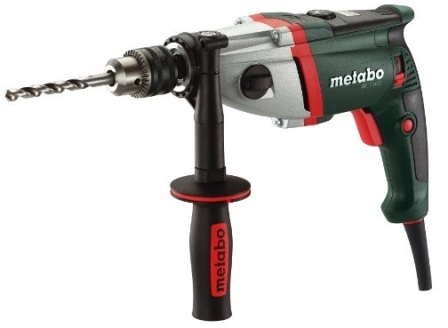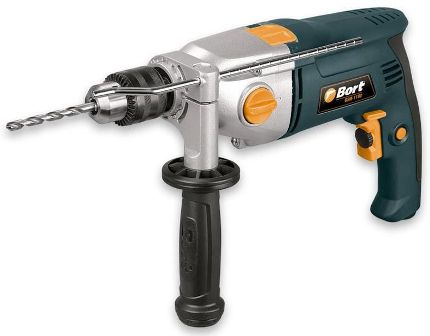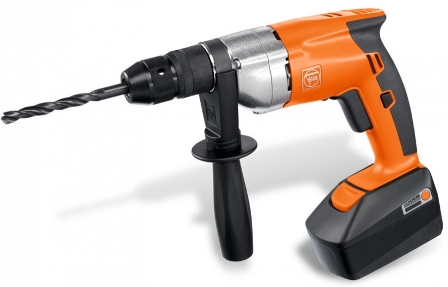Categories: Electrical Reviews
Number of views: 19486
Comments on the article: 1
Technical characteristics and functions of electric drill
 Not a single thorough repair, perhaps, can do without the use of a drill. Many installation work also often involves drilling holes. However, not everyone has a tool in use when the situation requires it.
Not a single thorough repair, perhaps, can do without the use of a drill. Many installation work also often involves drilling holes. However, not everyone has a tool in use when the situation requires it.
Let's figure out what a drill is, what its functions are and what the technical characteristics of a drill can be, so that everyone can get a suitable tool if necessary, without overpaying for unnecessary excesses.
So, a drill is a manual power tool, the main function of which is drilling holes. Drill holes can be drilled in plastic, in wood, in metal, and even in concrete, but not every drill is suitable for concrete, but we will talk about this later.
A modern electric drill is a universal tool, because it is not necessary to install a drill in a chuck; therefore, a drill can be used both for grinding and for the preparation of mortars (as a mixer).
The modern market of electric drills provides a fairly wide range of tools for selection, while all electric drills can be divided into two classes: professional and household. The differences are primarily in the technical characteristics.
Professional drills are designed for frequent regular use, they can easily withstand hours of work, they do not overheat and fail, they are distinguished by increased power - more than 500 W and the quality of work units.
Household drills are less powerful and less bulky, but they are not able to withstand a long load, so you can work with a household drill only with interruptions every 10 minutes. Thus, a professional drill is needed for regular work, and a household drill for rare household applications.
The main characteristic of an electric drill is power, usually lying in the range from 300 to 1300 watts. Two key parameters of the tool are inextricably linked with the power of the drill - the number of revolutions per minute and torque. If we consider two drills of different power, but with the same speed, then a more powerful drill will have more torque.
How does this affect practice? If the drill with high revolutions starts to overload in the moment, then it will start to overheat, while the more powerful drill, adapted to give high torque values, the drill can easily withstand this mode. Professional drills have high torque at high speeds.
Consider an example: BOSCH GBM 10 RE Professional is capable of developing a torque of 20 Nm at 1676 rpm, while the power consumption from the network will be 600 W, with a useful power output of 360 watts, METABO BE 1100 at 2800 rpm can develop a torque of 16 Nm, but it also has more power - 1100 watts of consumption with a net power output of 660 watts.
Obviously, a more powerful drill (as in this example) can work one and a half times more efficiently. But then again, in one case it is advisable to use the first drill, in another - the second. Up to 500 watts is enough for working with soft materials, while 1000 watts may be needed for harder materials.
Some drills have a speed adjustment function and the ability to reverse, which is very useful in cases where high torque at low speed is required, or the drill needs to be used as a mixer for preparing building mixtures, or even as a screwdriver. Speed adjustment is usually done with a special button. According to this parameter, drills are two-speed and reverse. To implement the functions of a mixer or screwdriver additional nozzles.

The drill chuck can be quick-clamping or gear (cam). The keyless chuck is very convenient when working where a quick change of equipment is required, for example, when installing drywall sheets. The cam chuck is accompanied by a toothed key, changing the drill here takes more time, but such a drill mount is more reliable, which is extremely important when drilling coarse metals.
The cartridge may be removable or non-removable. The detachable chuck is easy to replace if necessary, if during the work process drills that are too different in diameter are used, then a suitable chuck is simply put under the corresponding drill diameter. By the way, the maximum drill diameter for a particular drill is also an important technical characteristic, and you should not exceed the allowable diameter so as not to overload and damage the drill.

Particularly noteworthy are the impact drills, equipped with a special impact chuck and ratchet mechanism, somewhat approximating a conventional drill already to the perforator.
An impact drill is useful when working with concrete, brick or stone. In addition to rotating the drill, such a drill additionally moves the chuck back and forth, which increases productivity when working with solid materials. If hard work with reinforced concrete is expected, then a full-fledged hammer drill is needed, and an impact drill will not work.
An important parameter is the material of the drill gear housing, plastic or metal. The metal case is obviously more reliable.
Mentioning additional options, it is possible to note the convenience of removable handles, as well as the ability to attach a drill to the bed. These options bring added convenience when working, and contribute significantly to increased productivity.

As for powering the electric drill, there are some nuances here. For example, during ceiling work, a cordless drill powered by a battery is indispensable. Although the power of such a drill may not exceed 400 watts, and the battery requires regular recharging, the convenience of its use will affect the efficiency of the work.
If we talk about drills with a cord, it is better if power cord will be removable, such a cord is convenient to store, no need to wind it on a drill, putting it at risk of damage. In fairness, we note that for comfortable work with a traditional network drill, a cord with a length of 4 meters or more is most convenient.
Angular drills deserve special mention. They are designed for drilling holes in hard-to-reach places, between beams, and in cramped, sub-ceilinged rooms, in openings, in niches, etc., that is, where it is impossible to work with a conventional drill.
Thanks to a special gearbox, the angle drill chuck is located at right angles to the body and at a small distance from it, usually a shortened gear chuck. Small angular size (distance from the free end of the chuck to the upper surface of the tool body) increases the compactness of the drill and the convenience of working with it.
See also at bgv.electricianexp.com
:
